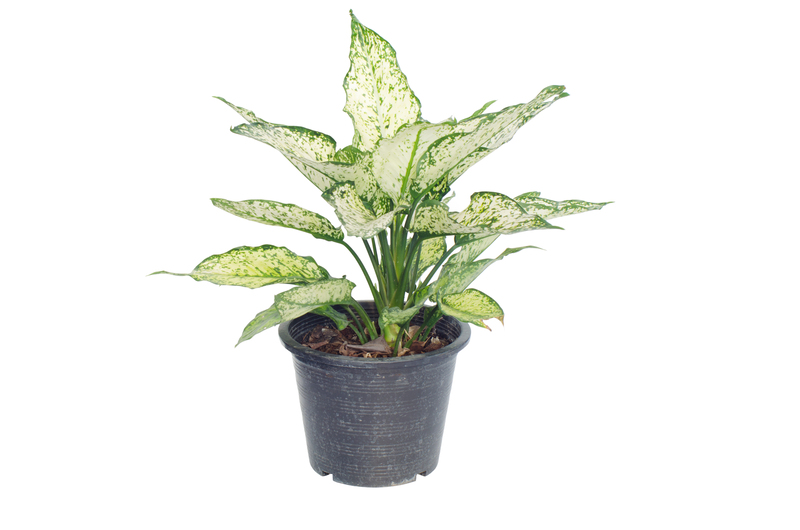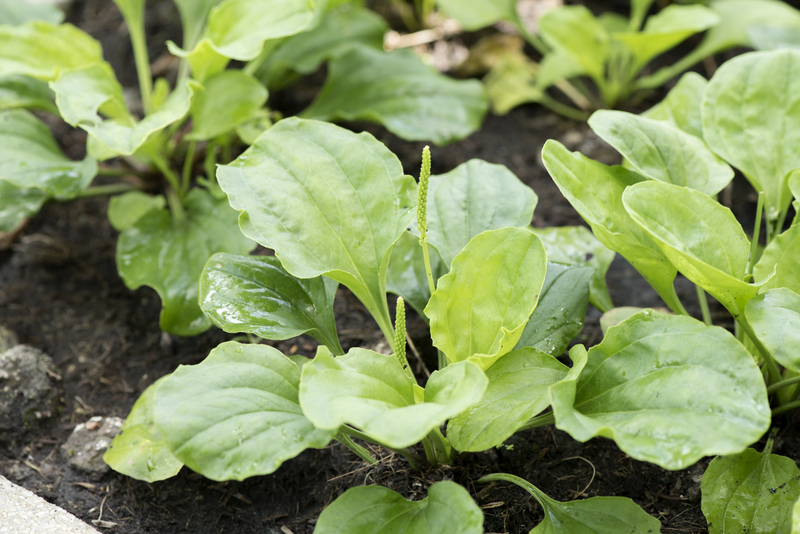Crafting a Pet-Proof Yard for Happy Gardening
Posted on 07/09/2025
Crafting a Pet-Proof Yard for Happy Gardening: A Comprehensive Guide
Gardening can be a truly rewarding experience, but for pet owners, achieving the perfect garden doesn't just mean growing healthy plants--it also means creating a safe and secure space for your furry companions. This comprehensive guide will walk you through the practical, pet-friendly gardening solutions you need to craft a pet-proof yard while nurturing your passion for plants.

Why is Creating a Pet-Proof Garden Essential?
For any devoted pet parent, a garden isn't just an outdoor space--it's a playground, a lounging spot, and a territory for your pet. But left unchecked, pets can quickly undo your hard-won gardening efforts and, worse, expose themselves to potential dangers. That's why crafting a pet-proof yard for happy gardening is so crucial. It balances your love for greenery with your responsibility to keep your loyal companions healthy and safe.
Common Problems Pets Pose in Yards
- Digging up flower beds
- Chewing or eating harmful plants
- Compacting soil and damaging roots
- Urinating on or trampling plants
- Escaping through weak fences
By addressing these challenges with practical landscaping ideas and design choices, you can create a happy, safe, and beautiful pet-friendly garden without sacrificing your plants or your pet's well-being.
Understanding Your Pets' Needs and Behaviors
Every pet is unique, and understanding their breed, energy level, and habits will help tailor your approach to pet-proof gardening. Here are a few points to consider:
- Dogs love to dig, chase, and patrol their territory. Some breeds are notorious for escaping or excavating garden beds.
- Cats enjoy exploring, climbing, and sunbathing. They may use loose soil as a litter box or prey on birds visiting your garden.
- Small pets (rabbits, guinea pigs, tortoises) may burrow, nibble low-lying plants, or squeeze through tiny gaps.
Observe your pets and design your garden with their tendencies in mind to strike the right balance between beauty and safety.
Strategies for Crafting a Pet-Proof Yard
1. Choose Pet-Safe Plants
One of the most important aspects of a pet-friendly, secure garden is plant selection. Many ornamental plants, while decorative, are toxic to pets if ingested.
Common plants that are toxic to pets:- Lilies (toxic to cats)
- Daffodils and tulips
- Oleander and foxglove
- Azalea and rhododendron
- Yew, sago palm, and castor bean
- Marigolds
- Sunflowers
- Snapdragons
- Bee balm
- Nasturtium
- Pet grass (wheatgrass, oat grass)
Always check the ASPCA's comprehensive list of toxic and non-toxic plants before introducing anything new to your pet-proofed landscape.
2. Create Boundaries with Pet-Proof Fencing
Installing the right pet-friendly fencing is the cornerstone of a dog-proof yard or a cat-proof garden. Fence height and durability are critical--many dogs can easily leap standard fences, while cats can scale them or squeeze through small gaps.
- For dogs: Choose sturdy, 4-6 foot-high fencing, such as wood, vinyl, or heavy-duty wire mesh. Bury a portion underground to deter diggers.
- For cats: Install angled fencing or cat-proof rollers on top to prevent climbing. Consider adding a catio--an enclosed outside area designed for felines.
- For small pets: Use fine-mesh fencing and regularly check for holes; low gates with underground barriers can help prevent escapes.
Regularly inspect fences for wear and tear, and ensure gates always close securely.
3. Designate Pet Zones & Pathways
Give your pets their own dedicated spaces to play, dig, or lounge. This helps reduce accidental plant damage and provides enrichment for your animals.
- Set up a digging pit using sand or loose soil in a shaded corner. Train dogs to dig here by hiding treats or toys.
- Create shaded lounging areas with pet beds, mulch, or grass. Dogs and cats love napping in cool, comfy spots.
- Lay out designated pathways using pavers, mulch, or gravel. Pets are creatures of habit and will prefer well-trodden paths--so design with their patterns in mind!
4. Use Mulch Carefully
Mulch not only beautifies your beds but also helps with moisture retention and weed control. However, many common mulches such as cocoa mulch are harmful or toxic if consumed by pets.
- Avoid cocoa mulch--it contains theobromine, which is poisonous to dogs.
- Opt for pet-safe mulches like shredded pine, cedar, or cypress.
- Watch for splinters and avoid using sharp bark or stones that could injure paws or mouths.
5. Install Pet-Safe Water Features
A bubbling fountain or small pond can add tranquility to your garden, but water hazards pose risks for curious pets. Design water features with gradual slopes, easy exit points, and regular cleaning to prevent the spread of algae and bacteria. Consider a pet water station--a fresh bowl or fountain--for your pet's hydration needs.
6. Secure Tools, Chemicals, and Fertilizers
All pet-proofed gardens must include secure storage for gardening tools and chemicals. Many everyday products, including fertilizers, pesticides, and herbicides, are toxic if ingested by pets.
- Store chemicals in locked sheds or out-of-reach cabinets.
- Opt for organic, pet-safe solutions whenever possible.
- Rinse tools after use and never leave sharp implements out in the open.
- Allow lawns and plants to dry after chemical applications before letting pets into the area.
Choosing the Right Landscaping Materials
Pet-Friendly Surfaces
- Artificial turf--Soft, resilient, and easy to clean. It resists digging and urine spots, making it ideal for dogs.
- Natural grass--Best for sensitive feet, but select durable varieties like Bermuda or Kentucky bluegrass for high-traffic areas.
- Pavers and flagstones--Great for pathways; avoid sharp edges and keep them cool with strategic placement and shade.
- Bark chips or wood mulch--Choose pet-safe types and monitor for chewing or ingesting.
Safe Structures and Shade Options
- Arbors and pergolas--Enhance shade and can be intertwined with non-toxic vines for cooling effect.
- Pet shelters and tunnels--Give privacy and hideaways, particularly for shy or nervous animals.
Training Tips for a Pet-Proof Garden
Success in maintaining a pet-friendly, secure yard relies as much on training as design. Help your pets learn boundaries and desirable behaviors with positive reinforcement:
- Use treats and praise to reinforce rules like staying out of beds.
- Citrus scents, chicken wire, or motion-activated devices can deter digging in unwanted areas.
- Supervise pets, especially during initial yard explorations, until they learn their safe zones.
- Redirect unwanted behaviors to designated pet areas for digging, playing, or toileting.
Routine Maintenance and Safety Checks
- Inspect fences and gates monthly for damage or gaps.
- Regularly remove fallen branches, sharp objects, or toxic debris from the yard.
- Prune and deadhead plants to remove tempting but potentially dangerous flowers or berries.
- Maintain water bowls and water features--stagnant water can harbor pests and disease.

FAQs About Pet-Proofing Your Yard
Q: How can I keep my dog from digging up my plants?
A: Designate a specific digging spot filled with sand or loose soil and train your dog to use it. Add deterrents like buried chicken wire or citrus peels in plant beds. Regular exercise and enrichment also reduce unwanted digging.
Q: Are there pet-safe alternatives to traditional lawn fertilizers?
A: Yes! Choose organic compost, bone meal, fish emulsion, or seaweed-based fertilizers. Always check for non-toxic certification and let treated areas dry before allowing pets to return.
Q: What should I do if my pet eats a potentially toxic plant?
A: Contact your veterinarian immediately. The ASPCA Animal Poison Control Center is also a valuable resource. It's wise to keep their number handy and remove any toxic plant as soon as possible.
Conclusion: Enjoy Your Safe, Pet-Friendly Garden
With thoughtful planning and a few strategic changes, you can craft a pet-proof yard for happy gardening that brings joy to both you and your beloved animals. Combine pet-safe landscaping, careful plant selection, proper boundaries, and positive training for a garden that flourishes--and pets that thrive.
Your pet-friendly yard will not only protect your green investments but also foster a safe haven for your furry family members to play, explore, and bond with you outdoors. Happy gardening--and happy pets!

